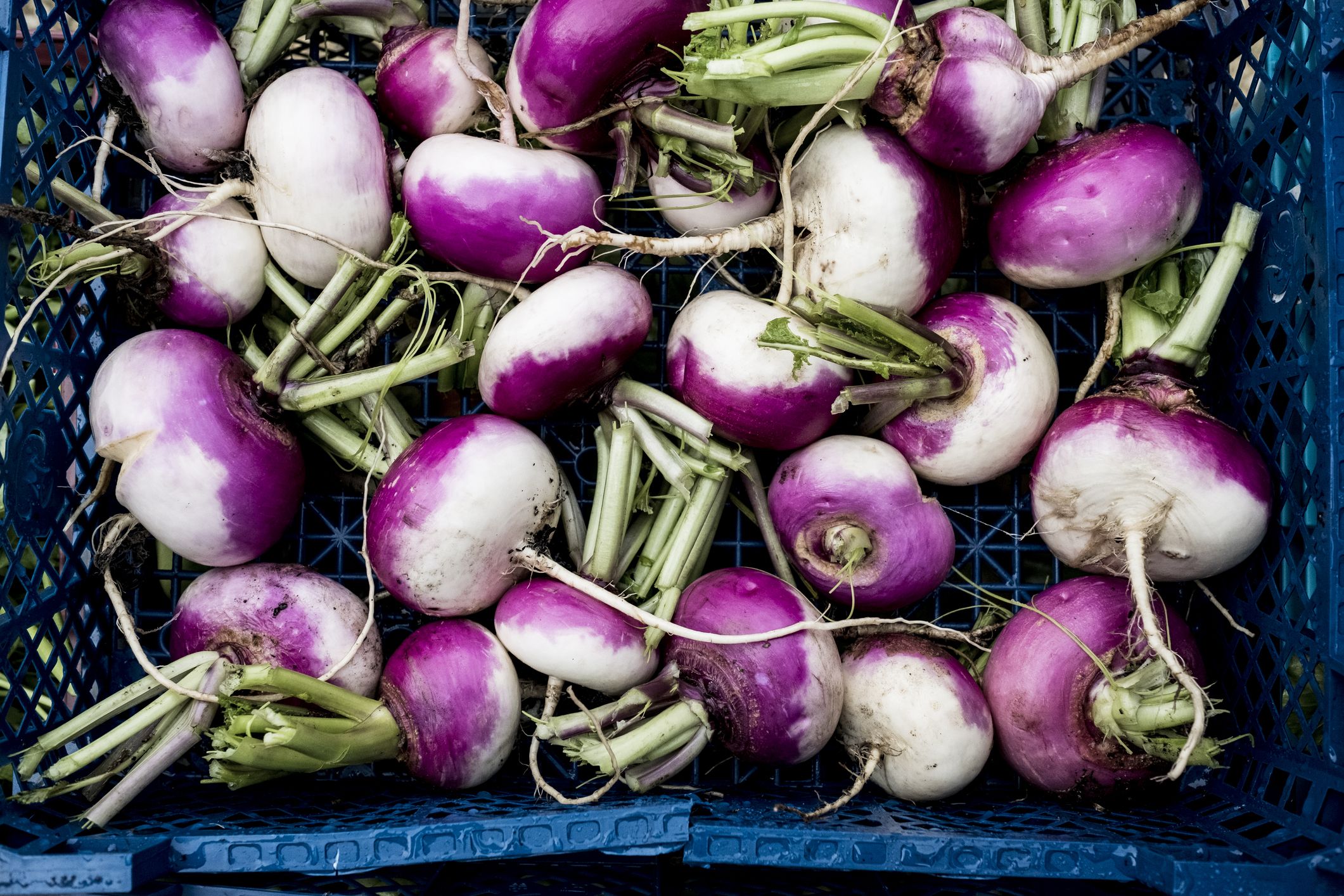Health Benefits of Turnips:- Beetroot, radish, carrots, and celery are root vegetables resembling turnips (Brassica rapa L.).1 Turnips provide vitamin C, fiber, antioxidants, and more.
Turnips are available from spring to winter and can be grilled for a substantial meal or added to soups and stews for nutrition.
Get all the facts about turnips’ health advantages and how to incorporate them into your diet this season.
Health Benefits of Turnips

Great Source of Vitamin C
- Turnips may be the immune system’s unsung hero, replacing oranges. Vitamin C, found in the root vegetable, helps the immune system by moving white blood cells to infection areas to destroy pathogens.
- Vitamin C has long been studied for cold prevention. Vitamin C pills may lower the severity and length of the common cold, but research suggests they don’t prevent it.
- Start with vitamin C from whole foods instead of pills. Raw turnips supply 30% of your daily vitamin C in one cup.
Good for Your Gut
- Turnips have fiber like all plant-based foods. Non-digestible fiber helps manage weight, blood sugar, and cholesterol, as well as promote regular bowel motions.
- For most people, eating extra fiber is wise. Only 4% of men and 12% of women in the U.S. get enough fiber.6 Put turnips on your dish to get extra fiber.
Rich in Antioxidants
- Antioxidants are nutrients that help the body get rid of chemicals known as free radicals. Free radicals hurt cells and make you more likely to get long-term illnesses over time.
- A diet full of antioxidant-rich foods, like fruits, vegetables, nuts, seeds, and whole grains, has always been linked to a lower chance of heart disease, cancer, and death from any cause.
- What’s good? There are many strong antioxidants in turnips, such as flavonoids like anthocyanins (which give some types of turnips their bright purple skin) and quercetin, a molecule that helps reduce inflammation and histamine production.
May Have Anti-Cancer Activity
- You can find turnips in the same family as cruciferous veggies like broccoli, cauliflower, arugula, cabbage, and Brussels sprouts.
- Cruciferous veggies are a good source of important nutrients like fiber, vitamin K, and glucosinolates. Glucosinolates are sulfur-containing chemicals that have been shown in animal studies to protect DNA from damage and fight cancer.
- Eating plants that are high in glucosinolates seems to turn on proteins that help the body break down hormones like estrogen. This could be one reason why women who had breast cancer and ate more cruciferous veggies had fewer menopause symptoms than women who didn’t eat as many cruciferous vegetables.
Also See :- Top 10 Foods Are Highest In Folate
Support Healthy Blood Pressure Levels
- Vegetables high in natural nitrates are not as likely to cause cancer as processed proteins like lunch meats and bacon, which contain nitrosamines.
- While processed meats lack vitamins and minerals, veggies include additional chemicals that may inhibit nitrosamine production.
- Additionally, turnip nitrates boost nitric oxide generation. Nitric oxide lowers blood pressure, helps blood arteries line, and reduces clotting.
Nutritional Facts of Turnips
Cooking turnips is the best way to eat them. The U.S. Department of Agriculture says that one cup of cubed turnips has the following amounts of food:
- Calories: 36.4
- Protein: 1.17 grams (g)
- Carbohydrates: 8.36 g
- Fiber: 2.34 g
- Vitamin C: 27.3 milligrams (mg), 30% of the daily value (DV)
- Potassium: 248 mg, 5% of the DV
The leafy tops of turnips, called “greens,” are also a great source of vitamins. About 35% of your daily vitamin C and vitamin A needs are met by just one cup of raw turnip greens.
Tips for Consuming Turnips
Turnips are fairly mild in flavor, so they can be used in numerous ways. Try:
- As a hearty side dish for dinner, roast turnips with other seasonal veggies like butternut squash and Brussels sprouts.
- Putting turnips in vegetable soups you make at home
- Making a root veggie gratin with them.
- Making them smooth is a low-carb way to make mashed potatoes.
- For a new kind of leafy greens, try sautéing turnip greens, which are the tops of the plant.
- With a microblade, you can cut them very thinly to put on toast or salads.
Risks of Eating Turnips
- Turnips are safe uncooked, but cooked ones are easier to digest and less likely to cause stomach issues.
- Those sensitive to FODMAPs may have GI issues after consuming over 3.5 ounces (about ⅔ of a medium-sized turnip) in one sitting. Because the root vegetable contains considerable amounts of sorbitol, a natural sugar alcohol.
- Goitrogens in turnips can disrupt thyroid function. Goitrogenic foods only seem to be dangerous when eaten uncooked, in high quantities, and by those with iodine deficiency.17
- In light of their nutritional value, moderate amounts of cooked goitrogen-containing meals are likely safe and suggested for thyroid patients.
- Finally, like all soil-grown crops, turnips may be contaminated by heavy metals or pesticides. Don’t let this stop you from eating produce. Low levels of these drugs are unlikely to harm most people.
IF you like this Article Health Benefits of Turnips Please share with your friends And Family Members.
